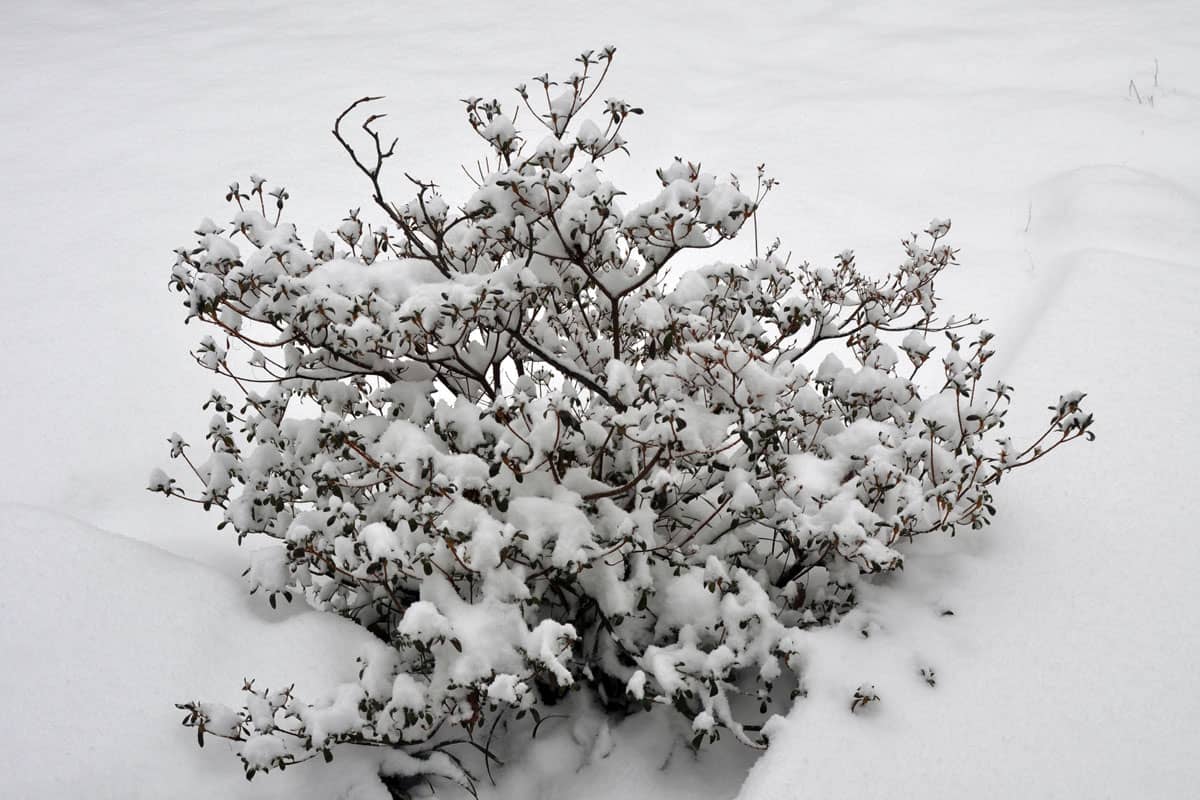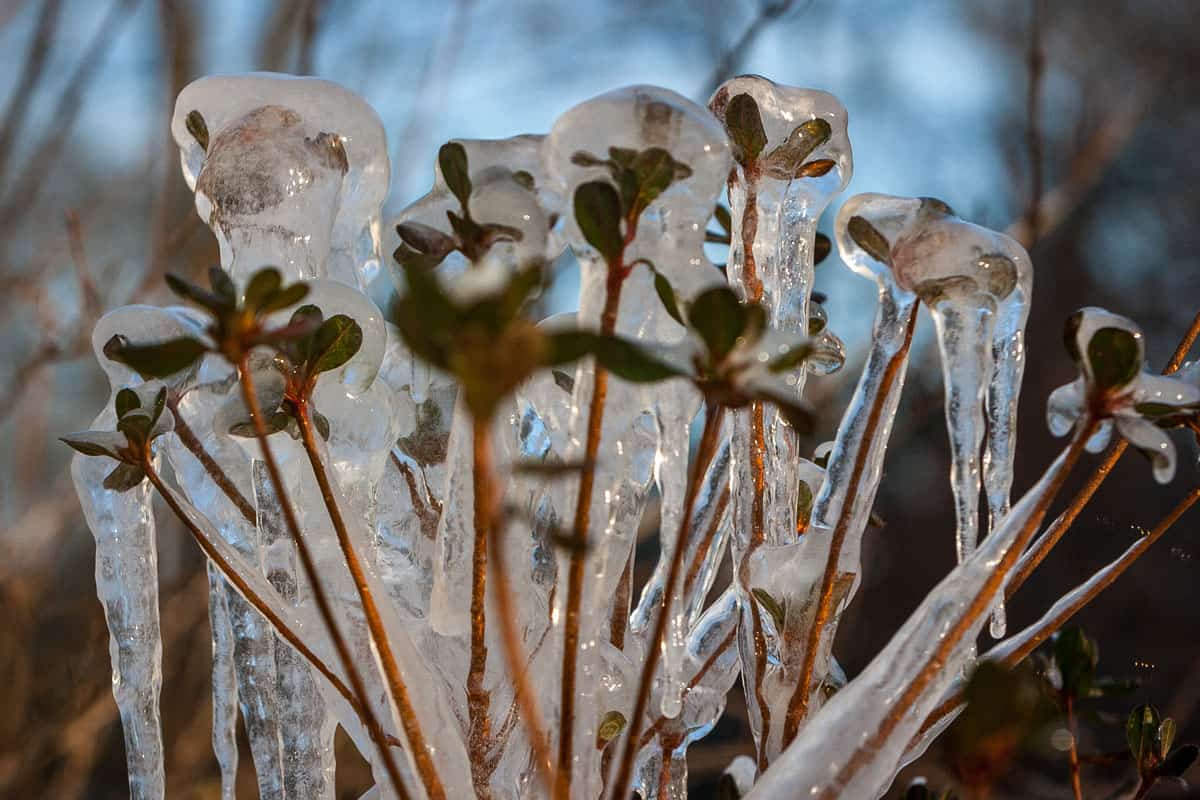Azaleas are easy-to-care shrubs that bloom with bright-colored flowers in spring. This perennial is sun-loving, yet, it can experience a freeze during winter. In this article, we have researched whether azaleas can survive a freeze.
Most azaleas will survive a freeze. There are cold hardy varieties that will endure the low temperatures. You need to prepare the plant before temperatures drop.
If the plant has frozen, it can still recover without intervention. However, with excessive exposure to the cold, the azaleas will die.
It is a loss if you let your azaleas die due to freezing. There are remedies available, but it is best to take preventive measures against the harsh winter. Read further to understand how the cold affects azaleas!

Can Azaleas Survive Freezing Temperatures?
Azaleas love the sun, which helps grow vibrant flowers and green foliage. The plant can tolerate the cold at around -17° to 32 ° Celsius. The cool to mild temperature is essential for reblooming.

Yet, the shallow temperatures of harsh winters will cause damage to the azaleas. The usual signs of cold injury include split bark, dead branches, dropped buds, and discolored leaves.
The azaleas are prone to damage caused by freezing if they have been through drought or disease before the winter. Azaleas with less extensive and older root systems cannot endure the freeze.
The frozen sap from flowering buds dries out the vascular tissue and splits the bark. Moreover, prolonged exposure to freezing temperatures will kill the shrub.

Deciduous azaleas can bear lower temperatures well compared to evergreen types. If you are in colder and wintry regions, some varieties are cold-hardy.
Cold Hardy Azaleas
Hybrid varieties of azaleas can survive the cold as low as -32° Celsius or in the US hardiness zone 6. As a result of several years of experiment, these varieties showed a high tolerance to low temperatures during winter.
Listed below are some cold-hardy azaleas you can plant:
- Northern Lights
- White Lights
- Autumn Amethyst
- Autumn Carnation
- Autumn Embers
- Autumn Empress
- Autumn Princess
- Autumn Debutante
- Autumn Sweetheart
Regardless of the variety you choose, it would help if you prepared the azaleas before winter arrives.

Do You Need To Cover Azaleas In Winter?
The azaleas need protection against freezing in the winter to avoid cold damage.
Add a protective cover over the azaleas to keep them safe from snowfall and icing in the winter. You can use burlap or cloth that allows the azaleas to breathe. Some fabric options are old sheets or canvas.
If you use plastic, moisture trapped inside will freeze and damage the plant.
You can also make a tent surrounding the plant. Place the stakes on the ground, then add a breathable cloth covering over it. Ensure that the cloth does not directly contact the plant to avoid injuries to the foliage.
Here are some plant covers you can buy:
Click here to see this product on Amazon.
The right time to add a covering over the azaleas is just before the temperatures get too cold. Placing the stakes won't be easy if you create the tent when the ground has frozen.
Only remove the cover after the winter, and the ground has thawed.
Click here to buy this product on Amazon.
What Do You Do If Azaleas Freeze?
If you have not taken any action to prevent freezing, it is not the end for the azaleas. The flowery shrub typically recovers without any intervention after a cold snap.
The remedies also depend on the location, weather patterns, and extent of damage to the plant.
Follow some tips below to revive frozen azaleas:
- Do not prune the plant for several days after it has frozen. It is best to wait for the azaleas to finish blooming or when buds begin to show.
- Prune them for severe injuries like split bark or dead branches after the plant has thawed.
If there are dead flower buds, they will easily fall off the plant. If the buds are plump, even discolored, they can still open. It is a waste if you cut the healthy buds.
So, you have to be patient when delaying the pruning.
Do Azaleas Lose Their Leaves In Winter?
Losing the foliage of your azaleas can make you anxious. It will appear that azaleas have two leaves. Most do not notice the fall of the first set of leaves because another set grows in late summer.
Those plants hold their leaves throughout the years in harsh and long winters. After a freeze, the plant will start behaving like deciduous azalea. In that case, the leaves will start dropping in the fall.
If you observe no more leaves after the winter, the azaleas have caught cold weather injuries.
Will Azaleas Die If They Freeze?

Azaleas can die if they have experienced long exposure to freezing conditions.
Split bark and browned leaves are the common signs that your plant is dead. The azalea is still alive if you observe green shoots and swelling flower buds.
You can read more in this post: Why Is My Azalea Dying?
Can Azaleas Bloom After A Freeze?
You might worry that your azaleas won't produce enough flowers after winter. Your garden may lose its liveliness without the colorful azaleas.
If your azaleas are not blooming, these are the reasons:
- Stress due to drought before winter
- Pruned off healthy flower buds at the wrong time
- High soil pH level
- Damage caused by the freeze
The flower buds, roots, and stems are sensitive to low temperatures during winter. Damage to these parts might not bring out the full bloom of the azaleas.
Ice crystals freeze the cells of the plant.
Then, the ice expands and bursts the plant parts when the temperatures are too low. The freezing also dehydrates the plant, thus preventing the nutrients from reaching the plant tissues.

The azalea buds are essential in producing flowers. These buds are the most vulnerable when affected by late frosts before they become dormant. These are the first to die due to severe cold damage because of their softness.
Nonetheless, the overall health of the shrub affects its capacity to produce flowers and foliage. Do not lose hope yet, because there are ways to revive the plant.
How To Make Azaleas Bloom After A Freeze
You can revive the azaleas if the plant has lost its foliage and flower, but the stems are not dead. The typical remedy available is pruning.
If you see some green when you scrape a part of the stem, prune the piece above it.
By doing so, you encourage the growth of new stems. Likewise, check the bark for healthy parts and do the same. Be careful not to prune the healthy buds.
The timing of pruning is also a factor. Prune the azaleas in early spring or late fall. If the plant re-grows, then you will get abundant blooms every year.
How Can I Make My Azaleas Produce More Blooms?
When successfully regrowing the azaleas, you should also learn how they can continue producing flowers for more years. Keep in mind these tips:
- Allow the plants to have enough sun exposure.
- Deadhead fading or dead blooms every year.
- Use a balanced or specially-formulated azalea fertilizer.
- Add mulch and compost to the soil to protect it from snow and ice in the coming winter.
- Cover your plants before the temperatures go down.
- Keep the pH level of the ground around 5.0 to 5.5.
You will need diligence and patience when caring for azaleas so that they will bloom constantly. You will get great results from your hard work no matter how long you wait.
Read from this post How Long Do Flowers Typically Take To Grow?
To Finish Up

Azaleas can survive a freeze. There can be some signs that might alarm you, such as discolored leaves and dropped buds. These minor injuries show that the plant is still alive.
Sadly, it can render a hopeless case if you see split bark or dead branches.
After the winter, your frozen azaleas can recover and bloom without intervention. Pruning is unnecessary to avoid cutting off healthy flower buds. You can prevent cold injuries by adding a protective cover before temperatures cool.
It takes some dedication and preparation to avoid the freezing of azaleas. Maintaining an alive and blooming azalea will keep your garden bright and delightful.


